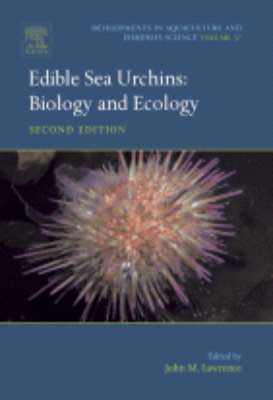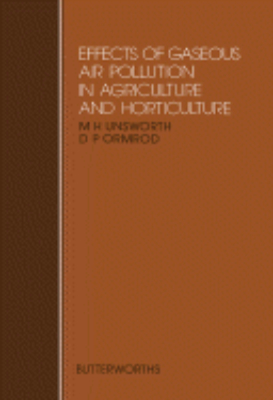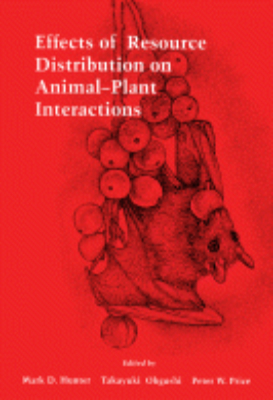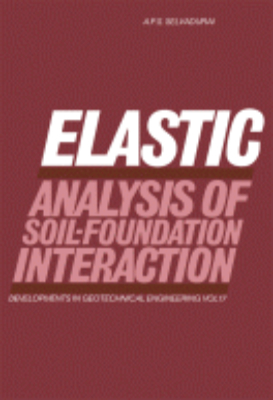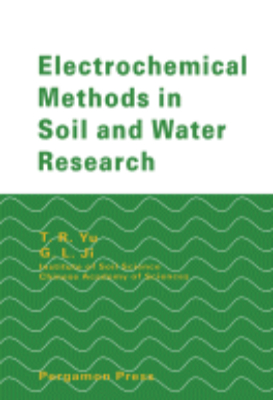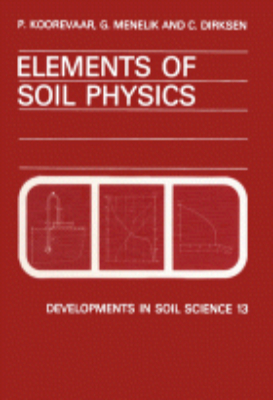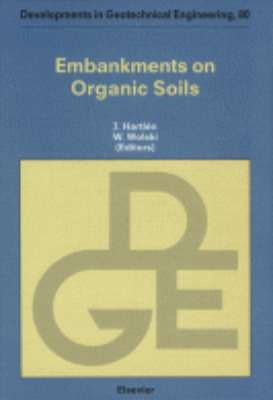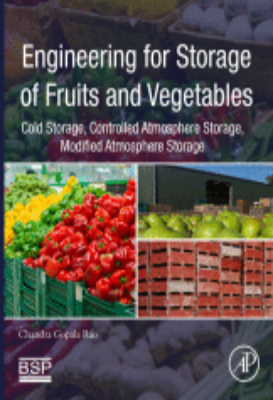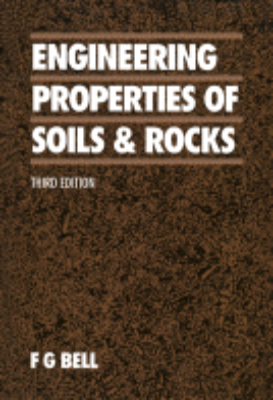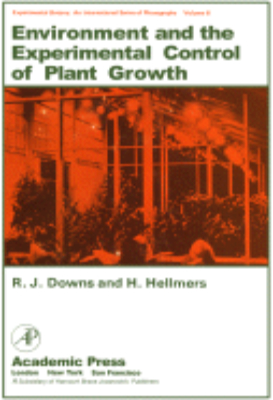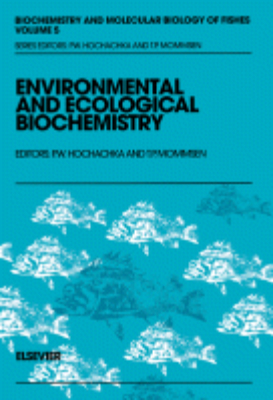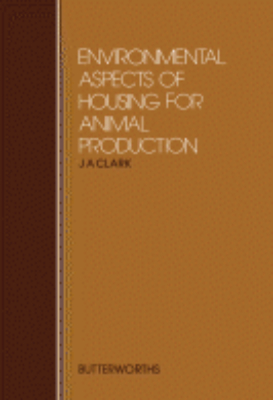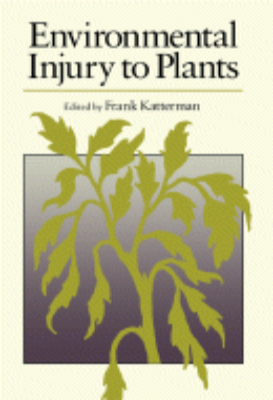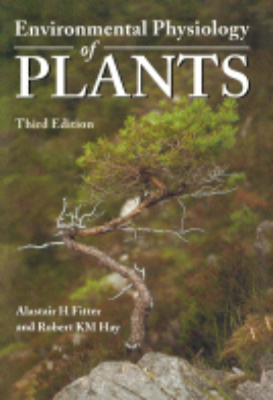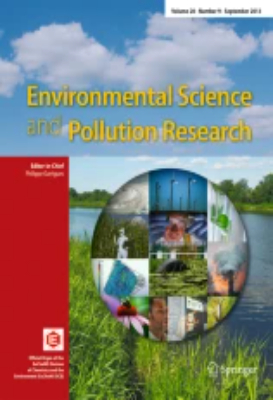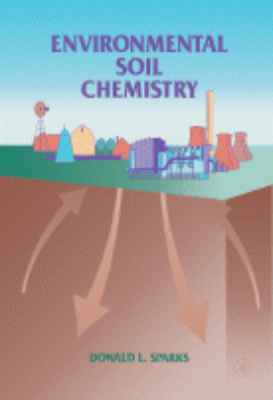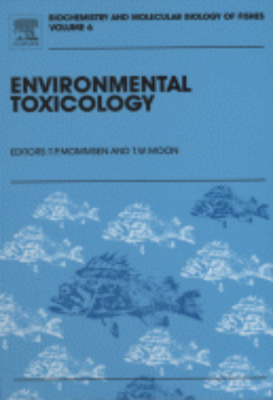E-Resources
Education and Training in Food Science
This book reviews the need for increased training in the food industry in order to bridge the gap between Eastern and Western Europe and the USA. Higher education in food science is discussed, including the training of technicians, and European initiatives, including ERASMUS and Network, are also described. Full coverage of the importance of international trade and the consumer protection acts, including a look at the need of various groups, is provided and the book closes with a look towards the future.
Effects of Gaseous Air Pollution in Agriculture and Horticulture
Effects of Gaseous Air Pollution in Agriculture and Horticulture focuses on the impact of air pollution on agriculture and horticulture. This book discusses the existence of significant concentrations of gaseous pollutants in several agricultural regions of industrialized countries, which is facilitated by improved instrumentation and monitoring networks. Organized into six parts encompassing 49 chapters, this book begins with an overview of the two aspects of distribution of gas pollutants. This text then considers a technique for estimation of dose from measurements of gas concentration and stomatal conductance. Other chapters provide examples of monitoring of air-pollution effects on plants, with emphasis on both the concentrations and effects of air pollutants as they complement each other. This book discusses as well the formation and mechanism of action of nitrogen oxides. The final chapter deals with the peroxidation of membrane lipids. This book is a valuable resource for agriculturists, horticulturists, and scientists.
Effects of Poisonous Plants on Livestock
Effects of Poisonous Plants on Livestock documents the proceedings of a U.S.-Australian symposium on the effects of poisonous plants on domestic livestock. The symposium was held at Utah State University in Logan, Utah, on 19-24 June 1977. The volume is organized into eight parts. Part I discusses poisonous plant problems in the United States and Australia. Part II contains papers on general topics such as inorganic toxicants and poisonous plants; the hazard of plant toxicities to the human population; and selenium in plants as a cause of livestock poisoning. Part III examines the effects of simple phytotoxins such as selenium and oxalate on livestock. Part IV focuses on the effects of plant hepatotoxins, including pyrrolizidine alkaloids, Artemisia nova, and Tetradymia spp. Part V deals with plant cardio/pulmonary toxins such as Myoporum spp. and Pimelea spp. Part VI tales up plant neurotoxins while Part VII discusses plant teratogens and toxins affecting reproduction. Part VII presents studies on other toxic substances. It includes studies on oak poisoning and pine needle abortion in cattle.
Effects of Resource Distribution on Animal Plant Interactions
Aimed primarily at advanced graduate students and professional biologists, this book explores the degree to which animal*b1plant interactions are determined by plant and animal variability. Many of the patterns seen in natural communities appear to result from cascading effects up as well as down the trophic system. Variability among primary producers can influence animal and plant population quality and dynamics, community structure, and the evolution of animal*b1plant interations.
Electrocardiography of Laboratory Animals
"Electrocardiography of Laboratory Animals is the only book covering electrocardiography of laboratory animals, including dogs, mini-pigs, and cynomologus monkeys. As more countries institute requirements for the care of laboratory animals in research, this publication offers an effective standard on performing and analyzing ECGs. Topics covered include safety electrocardiography, toxicology, safety pharmacology, and telemetry. Electrocardiography of Laboratory Animals will assist biological and medical researchers, veterinarians, zoologists, and students in understanding electrocardiography of various species of animals used in research. Key Features. Covers safety electrocardiography of large laboratory animals. Offers comprehensive analysis of ECGs for practical laboratory use. Includes a self-evaluation section for testing of ECG reading and analysis"
Electrochemical Methods in Soil and Water Research
This book deals with the principles and practices of electrochemical methods as applied to soil and water research, particularly those that can be carried out in the field. Beginning with the basis of potentiometric methods, including electrode potential, principles of potentiometric methods, reference electrodes, liquid-junction potential and characteristics of ion-selective electrodes, the author then proceeds to describe the properties and applications of various types of potentiometric electrodes, including glass, solid-state membrane, liquid-state membrane, oxidation-reduction and gas sensors. A special chapter devoted to commonly encountered problems will aid readers not familiar with potentiometric methods. Voltammetric methods, conductometric methods and electrochemical instruments are also discussed.
Electron Microscopy of Plant Cells
Electron Microscopy of Plant Cells serves as manual or reference of major modern techniques used to prepare plant material for transmission and scanning electron microscopy. There have been other books that generally discuss electron microscope methodology. This book focuses on problem areas encountered through the presence of tough cell walls and large central vacuole. It details preparative techniques for botanical specimens. Each of the nine chapters of this book covers the basic principles, useful applications, and reliable procedures used on the method of electron microscopy. Other topics discussed in each chapter include the general preparation and straining of thin sections, quantitative morphological analysis, and enzyme cytochemistry. This book also explains the immunogold labelling, rapid-freezing methods, and ambient- and low-temperature scanning electron microscopy among others. This book will be invaluable to general scientists, biologists, botanists, and students specializing in plant anatomy.
Elementary Medical Biochemistry
Elementary Medical Biochemistry deals with the biochemical basis of the process of life, particularly, the principles of metabolic processes and the systems controlling these processes. The book reviews matter, energy, and the molecular transport processes in the body (known as diffusion, osmosis, filtration, active transport, circulation). The text also describes the medical uses of oxygen, and its functions together with hydrogen, carbon, and nitrogen. The book explains the importance of minerals in the body such as sodium, potassium, calcium, magnesium, iron, chlorine, phosphorus, sulfur, the trace elements (copper, manganese, cobalt), and other elements (nickel, cadmium, vanadium). Chemical reactions either form or break chemical bonds resulting in an uptake or release of energy. The book explains the various factors affecting the rate at which a chemical reaction occurs. These factors include temperature, concentration of reagents, or enzymes. The text also describes the metabolic fate of pyruvic acid, the glycolysis in muscle tissue, and the handling of end-products of metabolism by the body. The book is intended for students of nursing with diploma courses in general obstetrics and psychiatric nursing.
Elsevier’s Integrated Biochemistry
"Each title in the new Integrated series focuses on the core knowledge in a specific basic science discipline, while linking that information to related concepts from other disciplines. Case-based questions at the end of each chapter enable you to gauge your mastery of the material, and a color-coded format allows you to quickly find the specific guidance you need. Bonus STUDENT CONSULT access included with the text allows you to conveniently access the books content online clip content to your handheld device link to content in other STUDENT CONSULT titles and more! These concise and user-friendly references provide crucial guidance for the early years of medical training, as well as for exam preparation. Key Features. Includes case-based questions at the end of each chapter. Features a colour-coded format to facilitate quick reference and promote effective retention. Offers access to STUDENT CONSULT! At www.studentconsult.com, you'll find the complete text and illustrations of the book online, fully searchable ""Integration Links"" to bonus content in other STUDENT CONSULT titles content clipping for handheld devices an interactive community center with a wealth of additional resources and much more!"
Emergency Procedures for the Small Animal Veterinarian
The second edition of the hugely successful Emergency Procedures for the Small Animal Veterinarian gives vets all the information they need to form a diagnosis quickly and accurately, establish a prognosis and recommend treatment for a patient suffering an illness, injury or toxic event. Easy-to-read bullet-point text gives quick access to the most essential information needed to treat emergency cases quickly and efficiently. Extensive practical appendices provide easy reference to essential data including commonly used drugs and supplements, drugs in special circumstances (e.g. safe drugs in pregnancy, drugs to avoid in renal failure etc), clinical chemistry and laboratory data, conversion tables and much more. With step-by-step coverage of cardiopulmonary emergencies, trauma gastrointestinal emergencies, toxicological events, a greatly expanded chapter on exotic pets, and much more, Emergency Procedures for the Small Animal Veterinarian provides all the facts vets need to help them save more lives faster!
Emery and Rimoin’s Principles and Practice of Medical Genetics
For decades, Emery and Rimoins Principles and Practice of Medical Genetics has provided the ultimate source for practicing clinicians to learn how the study of genetics can be integrated into practice. With almost 5,000 pages of detailed coverage, this fully online sixth edition of the classic reference adds the latest information on prenatal diagnosis, genetic screening, genetic counseling, and treatment strategies to complete its coverage of the growing field for medical students, residents and physicians involved in the care of patients with genetic conditions. Clinically oriented information is supported by expanded sections on basic principles of genetics, research approaches, and analytics to embrace the evolving population of students, researchers, and practitioners who are integrating their work to provide advanced diagnosis, prevention and treatment of human disease. With advances in high-throughput technologies propelling the closer integration of lab and clinical work, this edition bridges the gap between high-level molecular genetics and clinical application.
Engineering for Storage of Fruits and Vegetables
Engineering for Storage of Fruits and Vegetables is a comprehensive reference that provides an understanding of the basic principles of cold storage load estimation, refrigeration capacity calculations for various types of cold storages, and other topics of evaporative cooling, thus demonstrating the important principles for designing low cost precooling chambers. The book is written in an accessible manner to provide a solid understanding of different environments and their considerations to give readers the confidence they need to design suitable packaging materials by understanding parameters, including reaction rates, deteriorative reactions, Arrhenius equations, Q10, K, D, Z parameters, and their influence on reaction rates.
Engineering Properties of Soils and Rocks: 1983
Engineering Properties of Soils and Rocks, Second Edition provides a survey of the engineering properties of the major types of soil and rock. The book is comprised of nine chapters that tackle the various aspects of soils and rocks. Chapter 1 covers the origin of soil and the basis of soil classifications. Chapters 2 to 5 discuss the different types of soils, such as coarse grained soils, cohesive soils, and organic soils. Chapter 6 deals with the engineering behavior of rock masses, while Chapter 7 talks about the engineering classifications of weathered rocks and rock masses. Chapter 8 discusses the engineering properties of rocks, and Chapter 9 covers subsurface waters and ground conditions. The text will be of great use to both undergraduate students and practitioners of engineering geology, civil engineering, and mining engineering.
Engineering Properties of Soils and Rocks: 1992
Engineering Properties of Soils and Rocks, Third Edition serves as a guide to the engineering properties and behavior of soils and rocks. The text also complements other texts on rock and soil mechanics. The book covers topics such as the properties and classification of soils such as tills and other kinds of soils related to cold climates, tropical soils, and organic soils such as peat. The text also includes the engineering behavior and properties, classification and description, discontinuities, and weathering of rocks and rock masses. The monograph is recommended for engineers who would like to know about the properties of soils and rocks and the application of their study in the field of engineering.
Environment and the Experimental Control of Plant Growth
Environment and the Experimental Control of Plant Growth centers on the general role of environmental factors in plant growth and methods of providing the desired levels and limit of control. The book is organized into seven chapters focusing on the various factors in the environment, such as temperature, light, carbon dioxide, and water. It also describes the controlled environments for plant research. This book will help biologists understand what he is buying or constructing in terms of environment variability in plant growth facilities. It will also provide some help and guidance to those who have encountered the problem of not obtaining the degree of control they have expected in the units they have in hand.
Environmental and Animal Rights Extremism, Terrorism, and National Security
"As concerns about human treatment of the environment and animals have increased over the years, so have decentralized and extremist groups related to these causes. Environmental and Animal Rights Extremism, Terrorism, and National Security analyzes the international development of radical movements relating to environmental concerns and animal rights in the context of the threats they pose to national security. In addition to tracing the factors responsible for the rapid growth of these movements over the last 25 years, this text presents countermeasures that governments can deploy to neutralize the risk posed by these threats now and in the future. Bringing to bear new developments such as cyber activity and online activism, Environmental and Animal Rights Extremism, Terrorism, and National Security offers an examination of the direct and indirect violence, lone-wolf terrorism, and leaderless resistance that have characterized these radical wings from their inception.By not only identifying the tactics and organizational structures often employed by these groups, but also addressing future trends toward increased radicalization, Environmental and Animal Rights Extremism, Terrorism, and National Security is an important resource for identifying, anticipating, and mitigating threats posed by such movements. Key Features. Describes the psychological, social, and organizational mechanisms responsible for the functioning of the extremist wings of the interconnected environmental and animal rights movements in the context of national security. Identifies the main tactical and organizational ways these movements develop, moving from hierarchical organization to network structures, leaderless resistance, and lone-wolf activities. Covers radical environmental and animal rights groups, including Earth First!, Animal Liberation Front, Earth Liberation Front, Animal Rights Militia, and the Sea Shepherd Conservation Society. Looks to future trends in radicalization of these movements"
Environmental Aspects of Housing for Animal Production
Environmental Aspects of Housing for Animal Production is concerned with environmental aspects of housing farm animals. The discussions are organized around physical and physiological principles; environmental influences on reproduction; environmental influences on the productivity of farm animals; optimal housing environments for temperate and cool climates; housing environments for hot climates; engineering and control of the house environment; and the constraints of welfare and disease. This text consists of 32 chapters divided into nine sections. The first chapter explores the physiological mechanisms whereby the food- or fiber-producing animals maintain a constant body temperature under climatic extremes and the possible impact that these physiological processes may have on productive systems. This discussion is followed by chapters on the influence of climate on the decision to house livestock; the effect of the environment on animal reproduction; thermal influences on poultry; and the importance of ventilation and temperature control. This text also considers the poultry housing problems in tropical and subtropical climates; insulation of animal houses; and the interaction between feathering and egg production in laying hens. This book will appeal to those working in the field of housing for animal production, both in research and development and at a practical level.
Environmental Control of Plant Growth
Environmental Control of Plant Growth consists of the proceedings of a symposium held at Canberra, Australia, in August 1962. The symposium aims to consider the natural microenvironments of plants and the associations between natural and controlled environments. It also considers the physiological and genetic bases of responses by plants to environmental conditions. The book contains 24 chapters and discusses the physics of plant environment, as well as the physical quantities within plant-air layers. It also elucidates the energy and water balance, light relations, gas exchange, and energy relations in plant communities. The book also looks into the respiration of various organs and of whole plants. Lastly, the effects of the environment, including climatic factors, on the metabolism of plant cells are addressed.
Environmental Injury to Plants
The reaction of plant tissue to stress is of critical importance to growers concerned with the production of horticultural or agronomical plants on a large scale. This book discusses several factors that contribute to plant stress, including freezing and chill injury, drought stress, heat shock, salt stress, and toxic metals. The detection of plant stress by remote sensing devices is also examined.
Environmental Physiology of Plants
"This is the third edition of an established and successful university textbook. The original structure and philosophy of the book continue in this new edition, providing a genuine synthesis of modern ecological and physiological thinking, while entirely updating the detailed content. New features include a fresh, unified treatment of toxicity, emphasizing common features of plant response to ionic, gaseous, and other toxins, explicit treatment of issues relating to global change, and a section on the role of fire in plant physiology and communities. The illustrations in the text are improved over previous editions, including color plates for the first time, and the authors' continuing commitment to providing wide citation of the relevant literature has further improved the reference list. This revision of Environmental Physiology of Plants will ensure the reputation of this title as a useful and relevant text well into the 21st century. Key Features. Includes enhanced illustrations, now with color plates. Examines new molecular approaches which can be harnessed to solve problems in physiology. Features new topics such as the unified treatment of toxicity, an explicit treatment of the issues relating to global change, and a section on the role of fire"
Environmental Soil Chemistry
As the author states in his Preface, this book is written at a time when scientific and lay communities recognize that knowledge of environmental chemistry is fundamental in understanding and predicting the fate of pollutants in soils and waters, and in making sound decisions about remediation of contaminated soils. Environmental Soil Chemistry presents the fundamental concepts of soil science and applies them to environmentally significant reactions in soil. Clearly and concisely written for undergraduate and beginning graduate students of soil science, the book is likewise accessible to all students and professionals of environmental engineering and science. Chapters cover background information useful to students new to the discipline, including the chemistry of inorganic and organic soil components, soilacidity and salinity, and ion exchange and redox phenomena. However, discussion also extends to sorption/desorption, oxidation-reduction of metals and organic chemicals, rates of pollutant reactions as well as technologies for remediating contaminated soils. Supplementary reading lists, sample problems, and extensive tables and figures make this textbook accessible to readers.

